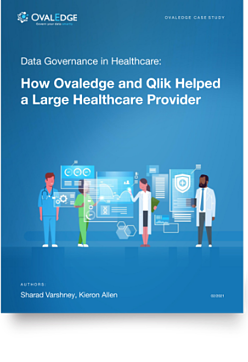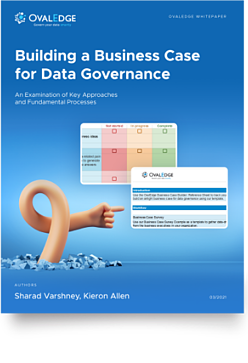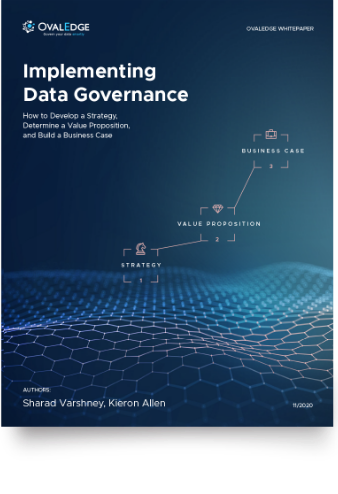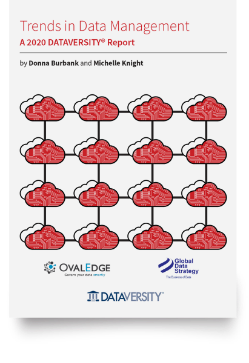Table of Contents
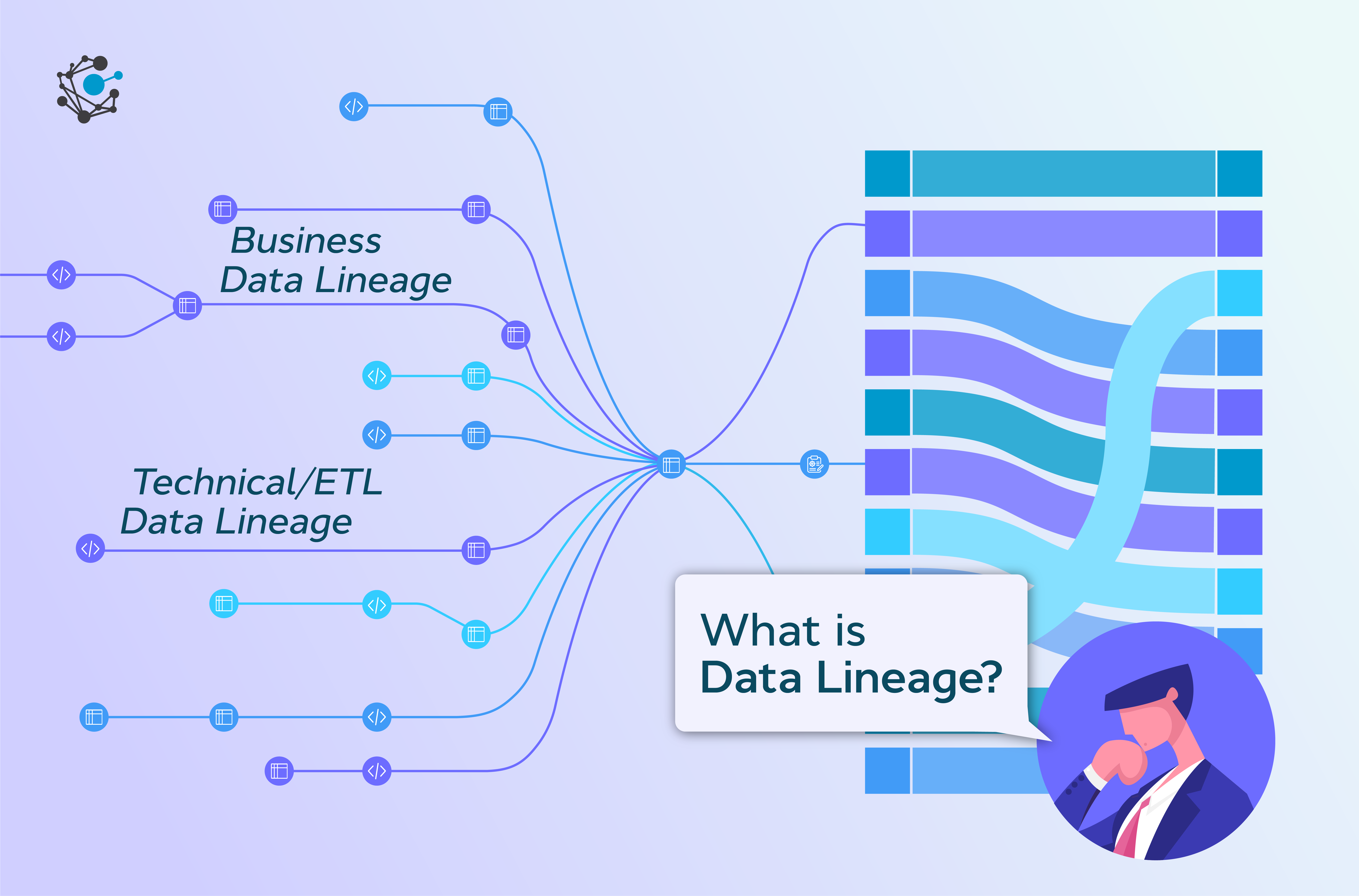
Data Lineage Explained with Examples
This article aims to demystify the intricacies of data lineage by exploring its two main types—Business Data Lineage and Technical/ETL Data Lineage—with clear examples illustrating their practical applications. As we delve into the realms of business processes and technical intricacies, the importance of data lineage will become apparent in fostering transparency, ensuring data quality, and empowering organizations to make informed decisions.
What is Data Lineage?
Data lineage is a critical aspect of data management that visually represents the flow and transformation of data throughout its lifecycle. It offers transparency into the origins, movements, and transformations of data within an organization's systems and business processes. By tracing the journey of data, organizations can enhance data quality, ensure regulatory compliance, build trust in data, and make more informed decisions.
Two Types of Data Lineage
Data lineage encompasses two main types: Business Data Lineage and Technical/Operational/ETL Data Lineage, each serving distinct purposes in understanding and managing data flow within an organization.
Business Data Lineage
Business Data Lineage delves into the ways various business processes interact with and utilize data. It seeks to answer critical questions about the business's data ecosystem:
- Data Consumption by Business Processes:
- Explore how different business processes consume and interact with the data.
- Identify the touchpoints where data is input, transformed, or output within business operations.
- Data Representation in Business Activities:
- Understand which business activities or processes are represented by the data.
- Clarify the role of the data in supporting specific business functions.
- Terminology and Definitions:
- Define the terms and concepts used within the data to ensure a shared understanding across the organization.
- Establish a standardized vocabulary to enhance communication and collaboration.
- Data Utilization for Reporting and Decision-Making:
- Investigate how the data contributes to generating reports.
- Analyze the role of the data in supporting decision-making processes within the organization.
Related Post: The Top Features of a Comprehensive Data Catalog
Example of Business Data Lineage
Consider a retail company tracking their revenue, where the calculation involves three types of sales:
- Product sales at point of sale - This revenue is directly sourced from the point of sale reporting system.
- Advertising revenue - This revenue is generated by leasing space for various advertisements. This revenue figure is extracted directly from a spreadsheet the advertising team manages.
- Rental revenue - is obtained from leasing spaces to businesses like restaurants or hair salons and can be sourced from the leasing software, a spreadsheet, or directly from the invoicing system.
Tracking the entire process outlined above constitutes business lineage. This lineage should include information on who updates the spreadsheet, the individuals with access permissions, the timing of updates, and whether updates occur post-invoicing or after collecting payment.
Technical / Operational / ETL Data Lineage
This type of data lineage focuses on the technical aspects of data movement and processing within systems. It aims to provide a detailed understanding of the operational journey of data:
- Data Movement Across Systems:
- Trace how data moves from one system to another throughout the entire data pipeline.
- Identify the integration points and mechanisms used for data transfer.
- Data Processing Details:
- Uncover the specifics of what happens to the data during each processing step.
- Examine transformations, cleansing, and any modifications made to the data.
- Error and Anomaly Detection:
- Investigate whether there were any errors or anomalies encountered during data processing.
- Implement measures to monitor and rectify issues that may arise.
- Timing and Performance Analysis:
- Analyze the timing and performance metrics of each step in the data pipeline.
- Optimize processing steps to improve efficiency and reduce latency.
Related Post: Top 8 Features of a Data Quality Tool
Example of Technical Lineage
In the retail company, when tracking revenue, data is sourced from three systems:
- Point of Sale Reporting System
- Excel Sheet
- Leasing Software
Technical lineage monitors the flow of data from these three distinct software platforms into the data warehouse. Subsequently, it traces the ETL (Extract, Transform, Load) process, which involves a formulaic calculation. This calculation may include summing the daily point-of-sale figures for the year 2023 and adding the yearly revenue from the Excel Sheet. The finalized data is then directed to a dashboard created in either Tableau or PowerBI.
Best Practices to Build Data Lineage
To harness the full potential of data lineage, in building it, it is essential to implement best practices that not only capture the intricacies of data movement but also facilitate effective communication, collaboration, and governance.
Business Data Lineage
Business Data Lineage, while rooted in understanding the broader business context, also benefits from best practices that foster clarity and alignment with organizational objectives.
- Initiating a collaborative approach involving key stakeholders from various departments helps articulate how data supports different business processes.
- Clearly defining and standardizing terminologies ensures a shared language, facilitating effective communication across the organization.
- Embedding Business Data Lineage within broader data governance practices helps maintain data quality, consistency, and compliance.
- Periodic reviews and validations involving business users contribute to the ongoing accuracy and relevance of Business Data Lineage, making it an invaluable asset for informed decision-making and strategic planning.
Related Post: What is Data Quality? Dimensions & Their Measurement
Technical Data Lineage
In the realm of Technical Data Lineage, the adoption of automation has become a cornerstone for efficiency and accuracy. Leveraging advanced tools, such as OvalEdge, organizations can automate the process of constructing Technical Data Lineage. These tools excel in parsing source code, comprehensively capturing the intricate data flow within the technical infrastructure.
Automation not only expedites the lineage-building process but also mitigates the risk of human error, ensuring a more reliable representation of data movement across systems. Best practices in this context involve regular updates and synchronization with evolving codebases, fostering a dynamic and responsive Technical Data Lineage that accurately mirrors the ever-changing technical landscape.
Related Post: Top Features of a Data Lineage Tool in 2024
Why do we need data lineage?
Data lineage offers several key benefits in data management and analytics:
- Improved Data Quality and Accuracy: By tracking the origin and transformations of data, data lineage helps in identifying and correcting errors. In case a data problem is at some source system, It can help you communicate with all the impacted people who might be affected.
- Enhanced Data Governance: Data lineage supports robust data governance by providing data processing and movement transparency. This is crucial for complying with regulations like GDPR or HIPAA, which require detailed knowledge of data origins and transformations.
- Easier Error Identification and Resolution: When data issues arise, data lineage allows teams to quickly trace back through the data pipeline to identify where the error originated, significantly reducing the time and effort needed for troubleshooting.
- Better Impact Analysis: Understanding how changes in one part of the data system affect others is essential. Data lineage provides insights into dependencies and relationships between data elements, enabling more effective impact analysis when changes are proposed.
- Increased Trust and Confidence in Data: For decision-makers and data consumers, knowing the history and transformations of data increases confidence in its validity and suitability for use in decision-making processes.
- Efficient Data Management and Migration: When migrating data from one system to another or integrating new data sources, data lineage provides a clear map of data flows, simplifying these processes and reducing risks.
- Streamlined Regulatory Compliance: Data lineage helps demonstrate compliance with various data regulations by providing clear, auditable trails of data movement and transformation.
- Facilitation of Data Discovery and Accessibility: Data lineage tools often include metadata management features, which make it easier for users to discover and access the data they need.
- Optimization of Data Processing: By understanding the flow of data, organizations can identify redundant processes and bottlenecks, leading to more efficient data processing workflows.
- Enhanced Collaboration and Communication: A clear understanding of data flows and transformations fosters better collaboration among data teams, IT departments, and business stakeholders, leading to more cohesive and informed decision-making processes.
Book a call with us to find out:
|

